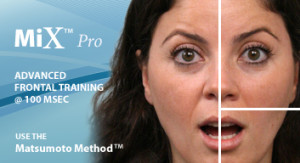 By Dr. David Matsumoto and Dr. Hyi Sung Hwang
By Dr. David Matsumoto and Dr. Hyi Sung Hwang
There are numerous tests and ways to evaluate what we have learned. However, there is currently no method to access the learning effect of reading other people’s emotions. Humintell is a leader of emotion reading training programs, and we have been conducting research in understanding emotions for years in order to not only create the best training tools and programs but also to accurately and reliably examine their impact.
Study 1:
Recently we published valuable evidence demonstrating the efficacy of training to recognize microexpressions of emotions (Matsumoto & Hwang, in press). This paper is notable because it presents the first scientific evidence of training efficacy to read microexpressions in normal adult populations. In Study 1, we randomly assigned subjects working as salespersons in South Korea to either a comparison group that received a general lecture of understanding emotions or a training group that received a 60-minute training session by an experienced trainer. The results showed a significantly increased ability of reading other’s emotions on the face in the training group compared to before the training and to the comparison group. This finding was especially notable for a couple of reasons. First, both groups were equivalent in their knowledge of emotions because they were both provided with basic information of reading emotions. However, while the training group received the actual training workshop, the comparison group received a book chapter about facial expressions of emotions instead. Second, the impact of the training program was not only demonstrated in the judgment tasks completed but also emerged in social and communication improvements evaluated on the job by third parties about the trainees two weeks after the participation in our program.
Study 2:
The findings of Study 1 were further bolstered by the results of Study 2, which showed the efficacy of the training program during a longer intermission period. In this study the trainees, who were attorneys or psychologists practicing as trial consultants, received our training. Two to three weeks later, a post-test was administered to the training group and a comparison group that did not receive the training. The training group had significantly higher recognition scores than did the comparison group. They also had faster reaction times. These findings were important because they demonstrated that not only can people be taught the ability to read emotions on face, but also that this ability can be retained.
The scientific data presented in these studies provide the necessary evidence for people who are interested in learning about understanding other’s emotions but hesitate to try it because of uncertainties about the outcome. If you interact with many people daily and want to understand them better, getting microexpression recognition training is an option that you may want to consider.
References
Matsumoto, D., & Hwang, H. S. (in press). Evidence for training the ability to read microexpressions of emotion. Motivation and Emotion. (Click here for a copy of the report. )
 Spotting a liar is complicated, as author Kevin Goodman outlines in his latest Huffington Post Blog “5 Guidelines to Catch a Liar”.
Spotting a liar is complicated, as author Kevin Goodman outlines in his latest Huffington Post Blog “5 Guidelines to Catch a Liar”.